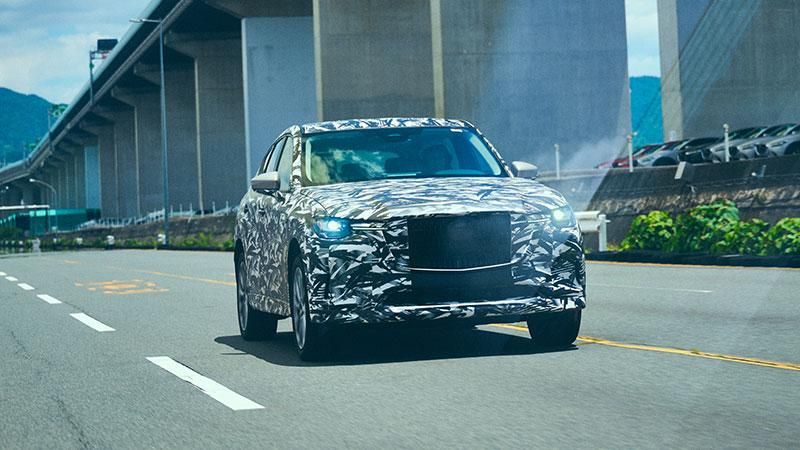ROME (ITALPRESS) – Before being commercialized, every Mazda model must pass rigorous tests, conducted on the test track at the Hiroshima headquarters, where Mazda engineers perfect the car’s unforgettable driving experience.At Mazda, a fundamental mission inspires every employee: to deliver a feeling of pure joy and transmit energy to every driver as soon as they get behind the wheel. Perceived by drivers and passengers around the world, this feeling has fueled Mazda’s innovations for nearly 100 years and is now a crucial part of the development process for the Brand’s new models. “uThis unique philosophy is perfectly embodied by Mazda’s talented engineers in every area who work tirelessly to provide every driver with an exhilarating driving experience. One of these engineers is Masayoshi Kanei. He has been a member of Mazda’s development team for 14 years, where he puts production-stage prototypes and near-production development vehicles through their paces, including the Brand’s latest flagship models. However, he rejects the “test pilot” label. “At Mazda, we do not consider ourselves test pilots, as we participate in all stages of development, from initial planning to validation of a production model ready for launch,” Kanei explains. “Certainly, we have the opportunity to test a large number of cars that pass through our department to compare data and evaluate their ride, quality and performance on the road. However, one essential measure is what we call ‘performance feel’ in Mazda, which focuses on the human perception of the car’s acceleration and movement.” “I am responsible for the engine,” he continues. “We collaborate with other engineers to calibrate details such as engine parameters, acceleration and power.” Even when the car exists only on paper, these processes are followed to establish the feasibility of the design.Once on the track, Kanei uses all his senses to evaluate the vehicle’s performance. “During acceleration, for example, it is necessary to measure and evaluate every minute change in elements such as the force of gravity and perceived vibrations,” he explains. “These factors have a significant impact on the driver’s experience.” Vibration is a vector of acceleration that varies over time, and Mazda considers it one of the key parameters in pursuing its human-centered innovations. Kanei admits, however, that human senses, while fundamental, are not perfect. “We send our evaluations to the [powertrain] designer and integrate them with digital data to configure a better engine that performs exactly as the driver wants it to. “This process played a particularly important role in Kanei’s work on the CX-60 and its e-Skyactiv PHEV powertrain. “A PHEV combines the best elements of an internal combustion engine car and an electric vehicle,” Kanei explains. When the electric vehicle’s battery is charged, it moves electrically, saving fuel. If you accelerate on an open road, it activates the internal combustion engine to provide the necessary power. “But sometimes you get the feeling that the car doesn’t accelerate as fast as you would like. Or, conversely, that it switches too quickly to the internal combustion engine. This is a common problem for plug-in hybrid vehicles,” Kanei says. This transition between electric drive and internal combustion engine can be complex to adjust, but it remains essential. Finally, he asks, “Wouldn’t you be scared if the car did not respond as desired?” The program presented new challenges, but Kanei and his team met them enthusiastically as they worked on the PHEV powertrain. “It was not easy to get the kind of drive we were looking for in a Mazda, but in the end we succeeded,” Kanei says with a smile. In short, the car is designed to be driven exactly the way you want it.That said, it is undeniable that road tests are an essential part of development, and Kanei acknowledges that he conducts many of them, both on Mazda’s supersecret test tracks in Japan and on Germany’s famous highways. “Because we are involved from the very beginning, we define our parameters and goals for the powertrain to ensure that each car offers driving pleasure,” he explains. Whether it is a PHEV or not, these parameters and goals must be met without deficiencies during road tests. During these tests, the margin for error in evaluations is very narrow.Kanei and his fellow engineers work under pressure, but they are more than prepared to deal with it. Having previously worked on models such as the Mazda CX-30, Kanei explains that Mazda has a system in place that ensures engineers can measure themselves against any task. To achieve this, a rigorous system has been set up to help Kanei and his colleagues develop the skills needed to evaluate in a balanced, consistent, and, above all, safe manner. Newcomers, for example, are limited to familiarizing themselves with Mazda’s extraordinary headquarters in Hiroshima, while qualified engineers are, as Kanei explains, accredited drivers to achieve “the maximum speeds allowed during testing.” In keeping with Mazda’s tradition of prioritizing the driver, the most important factor is to identify what will satisfy the end user.
photo: Mazda Italy press office
(ITALPRESS).

